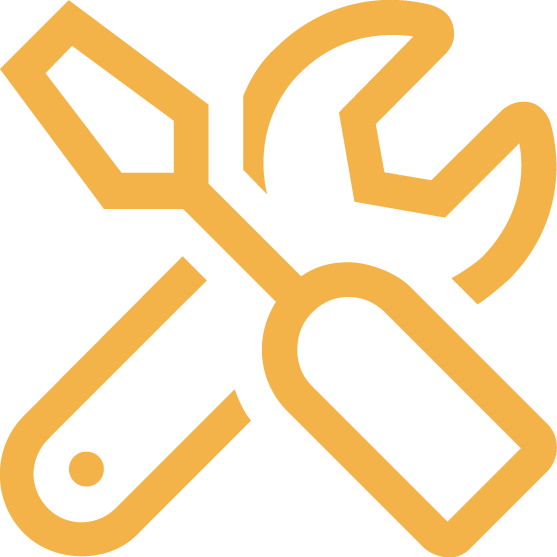Standard Operating Procedures
Standard Operating Procedures for Vibration Data Collection and Preparation for Analysis
By Randy Springer, President and Owner
Pepper Maintenance Systems, Inc. Minier, IL 61759
These procedures are to guide the steps to consistent, reliable data. The purpose of vibration analysis is to reach maximum equipment life, prevent failure and recommend repairs and corrective actions. Machine notes will be kept with Ascent data within the vibration signature.
Parameter sets cover a wide range of spectral data ranges for the best “picture" of operating conditions and machine exposure to damaging forces
- Special challenges will require more time and more detailed data collections. Example: investigating chronic failure
- Notes will be entered in software with machine notes to track specific components and monitor for changes of those components
- Pepper technicians will monitor data collection process on VB screen and have a basic understanding of what they are seeing.
- Technicians must read and understand previous findings and work with local staff to document corrective changes. Repair and/or replacement responses should be made according to recommendations. Records will be kept in Ascent software and on customer requested websites (such as RCI) that serve other needs as well.
- Standardized parameter sets will be kept in each computer’s Ascent database in the library and be used for all data collected.
Working safely
- No loose clothing or loose gloves will be worn
- Use bare hand for sensor placement or snug fitting leather gloves when possible
- Be wary of all rotary shafts, bearing collars and movement
- Beware of start-up and stopping forces; energy is very high
- Standard PPE (Personal Protective Equipment) will be worn
- Hard hat, safety glasses, and leather gloves when needed
- Steel-toe or hard-toe boots
- Hearing protection will be used where required by company or need has been determined by technician
- Muffling headsets will be used in locations where numerous PD pumps or high noise levels are present, at the discretion of technician
- All necessary PPE will be provided by Pepper Maintenance Systems, Inc.
Above all: Pepper Maintenance Systems, Inc. follows customers’ standards for PPE if there is any question
Sensors and placement
- Default sensor setting in analyzer should be used whenever possible: 100mv/g
- Marking the sensor placement location—ink marker or pencil is mandatory
- Pepper Maintenance Systems, Inc. will use ISO, Pepper Maintenance and industry recognized data collection points
- Horizontal – vertical relationship of sensor placement is relative to the earth’s horizon as a base reference
- Axial readings are taken parallel to the size/point of rotation, which is similar to looking down along the side of the shaft
- Those locations or customers using RCI or other website providers must verify the nomenclature (names) of the assets for tracking
Software and collection data
- Data will be archived in technician’s computer—Pepper’s Infrared Report Specialist (Kim Vonderheide) will track the data
- Email notices of data collection must be sent to Kim Vonderheide and to Randy Springer
- For normal data collection, weekly data exchange will be sent to Randy Springer for analysis and response. Specific problems of extreme risks are to be processed ASAP
- Data will be emailed to Randy Springer
- Motor and reducer data should be entered on one line when possible in machine notes
- Current data files will be cleaned and updated by each technician
- Technicians will use the detailed exception report and convert it to a Word document. Make additional notes and comments...beyond the machine notes in the data...there.
- Note machines will indicate loaded, no load or not checked
- Photo files will be used, photos labeled and emailed in jpeg format: Right click on file, send to: rspringer@peppermaintenance.com
- Probes will be used when needed and notations made
- Track needs to use probe. Machine notes will help keep track
When customers use RCI
- Make sure to verify nomenclature (names) are identical; Kim Vonderheide will check their accuracy
- Archiving data: exploring options as new Ascent version of software is released
- Pepper technicians will use names for assets found on RCI’s website
- Notes and comments entered will accumulate with the data
- Analyst will most often delete outdated notes, but technicians should be aware of changes as well, and delete when appropriate
Scope of inspections
- Use criticality studies of locations or similar company-specific guidelines.
- Use Pepper equipment listing when specific locations have not established list.
- Pepper technicians can suggest and when approved by staff, take data on nonlisted assets—if problems are noted through discussion with personnel or technician observation.
- Pepper technicians have authority to shut down or not inspect assets that are dangerous in terms of operation or accessibility. Plant manager will be notified of those conditions immediately.
- Specific customers have established their own set of guidelines for asset inspections and when those sites are being inspected, the appropriate guidelines will be followed.
- This SOP is intended to be a generic SOP for all company locations.
- Company specific guidelines will be listed as such.







